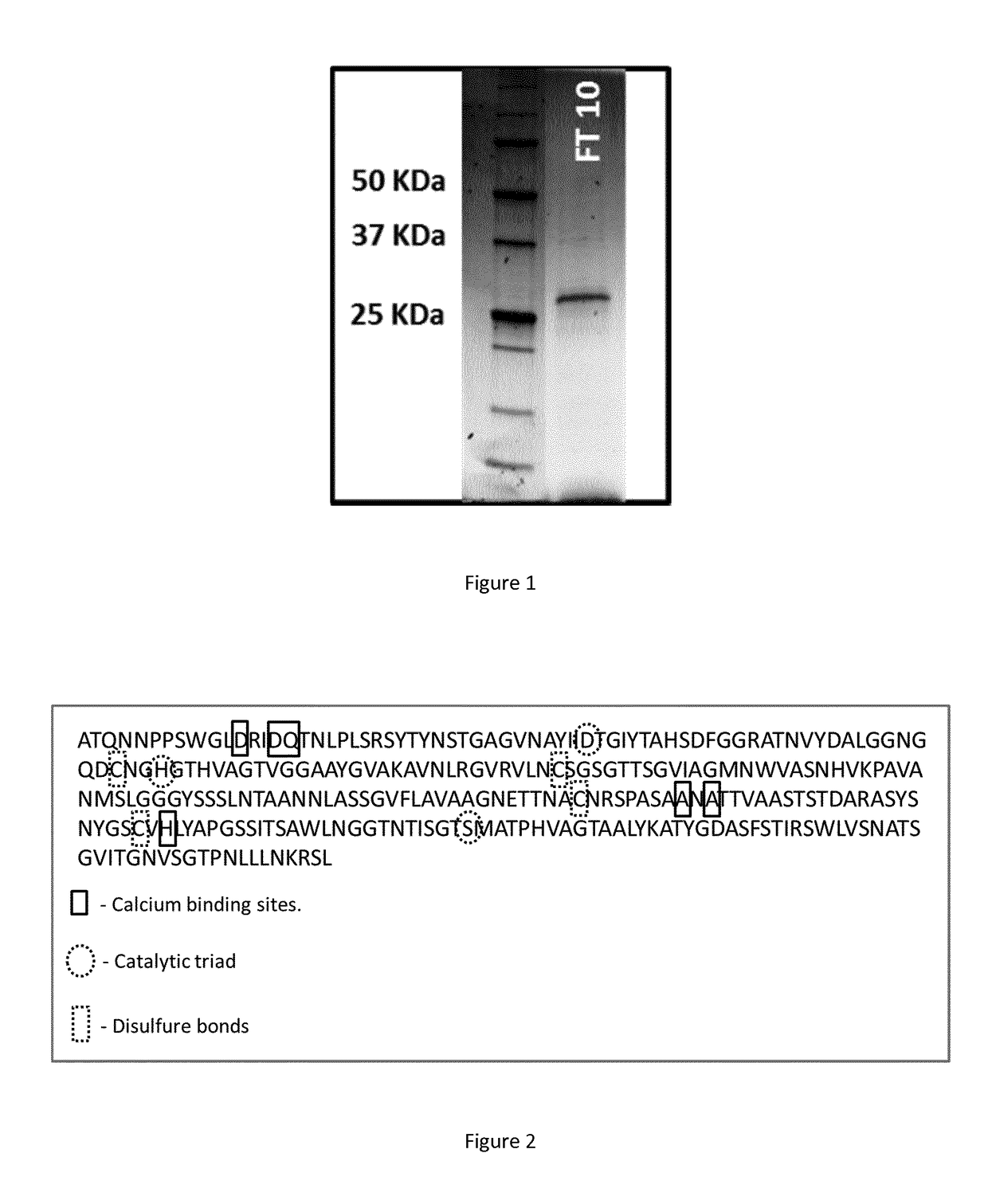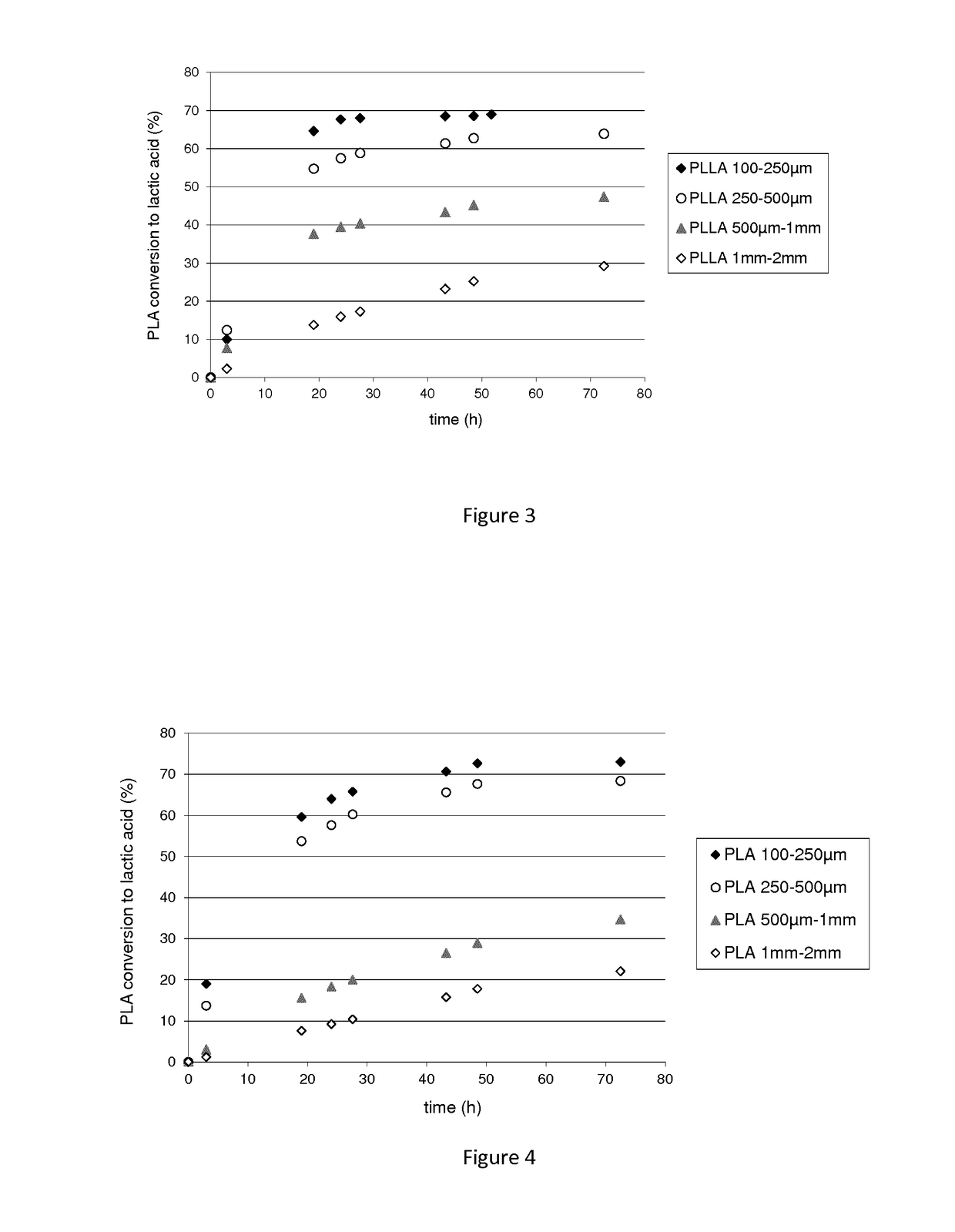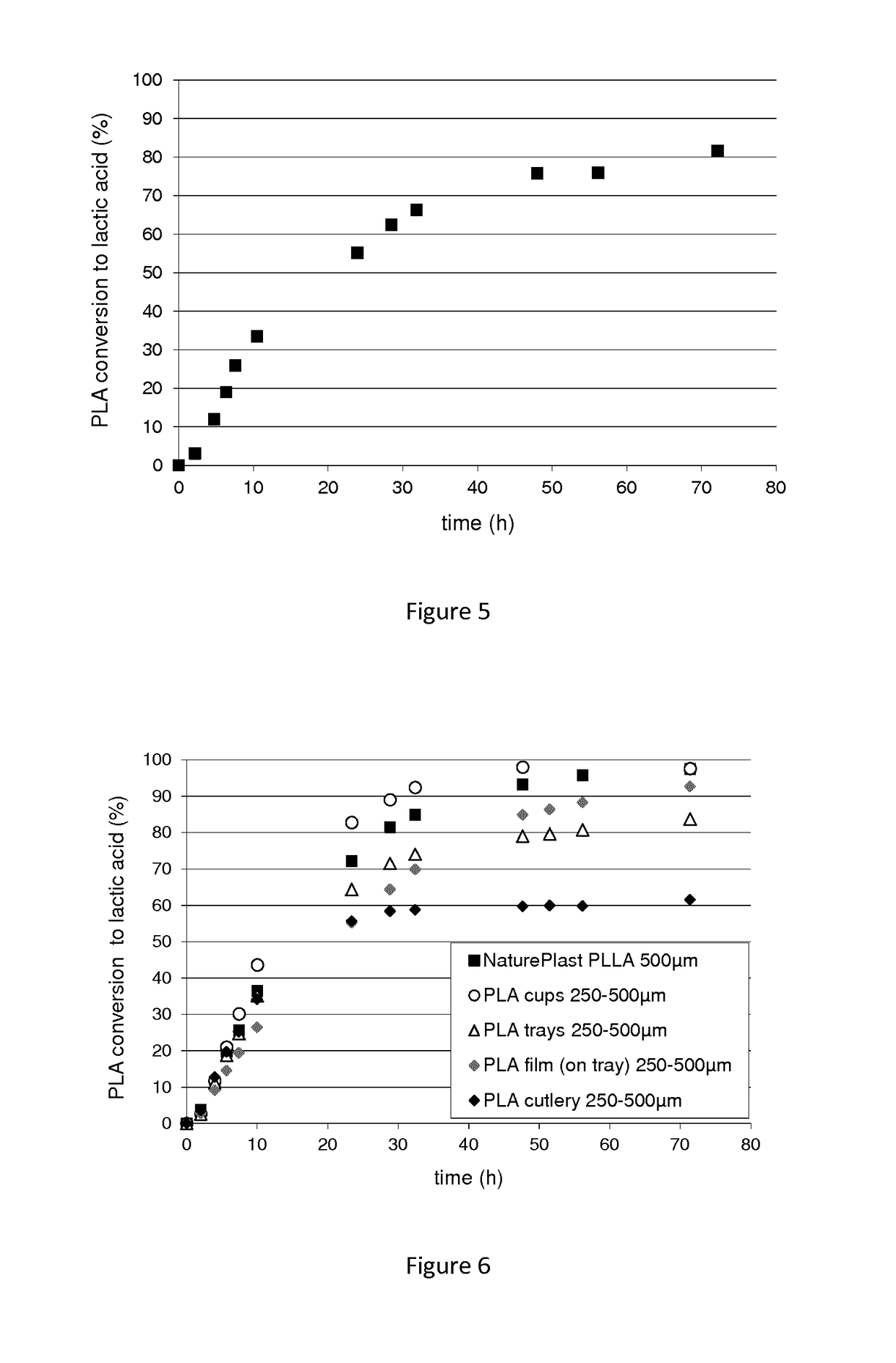Polypeptide having a polyester degrading activity and uses thereof
a polypeptide and polyester technology, applied in the field of new polypeptides having enzymatic activity, can solve the problems of high price, inefficiency of raw plastic products, and inability to meet the requirements of enzymatic reaction conditions, and achieve the effect of increasing the thermostability of polypeptides
- Summary
- Abstract
- Description
- Claims
- Application Information
AI Technical Summary
Benefits of technology
Problems solved by technology
Method used
Image
Examples
example 1
Purification and Identification of a Polyesterase from Actinomadura keratinilytica T16-1
[0148]A keratinilytica NBRC 104111 strain T16-1 (Sukkum et al. 2009), isolated from Thai forest soils, was selected for the high PLA-degrading activity of its supernatant.
Enzyme Production in Fermentor
[0149]Batch experiment was performed in a 10-L fermentor (Sartorius® Biostat Cplus). 500 mL of Yeast Malt Broth (YM, Sigma-Aldrich) pre-culture were used to inoculate 4.5 L of basal medium (gelatin 2.4 g / L; (NH4)2SO4 4 g / L; MgSO4.7H2O 0.2 g / L; yeast extract 0.5 g / L; K2HPO4 4 g / L; KH2PO4 2 g / L adjusted at pH 6.8 with NaOH). The temperature was regulated at 46° C. and the pH maintained at 6.8 with the addition of a 10% (v / v) H3PO4 solution. The stirring rate was fixed at 70 rpm to enable a gentle mixing and the aeration rate (0.6 to 1.6 vvm) was regulated to provide the reactor with a dissolved oxygen level higher than 20% of air saturation, in order to avoid any oxygen limitation in the culture. The ...
example 2
Characterization of the Polyesterase from A. keratinilytica T16-1.
[0169]The optimal pH and temperature of the enzyme were determined, and thermostability of the enzyme was studied.
Optimal pH and Temperature of the Polypeptide
[0170]The optimal pH of the enzyme is 8.5. Depolymerization tests in tubes magnetically stirred were performed at 50° C. in a range of pH between 7 and 9 with 600 μg of enzyme in 2 mL of buffer and 20 mg of Goodfellow PLA film. At pH 7, the enzyme shows few activity.
[0171]Depolymerization tests were carried out at 37° C., 45° C. and 50° C. at pH 8.5 with 600 μg of enzyme in 2 mL of buffer Tris-HCl pH 8.5 and 20 mg of Goodfellow PLA film. The optimal temperature of the enzyme is 50° C.
Polyesterase Thermostability
[0172]Polyesterase stability assays were realized in the temperature range from 4° C. to 60° C. Polyesterase is stable for months at 4° C. A compromise between stability and activity of the enzyme corresponds to a temperature of 45° C. At 45° C. the enzym...
example 3
Development of a PLA-Degradation Process
[0173]The aim of these experiments was to solve the problem of producing lactic acid in view of both potential inhibitor and drastically lowering pH during the reaction. The enzyme and the PLA were introduced and confined in a dialysis tube of 10 kDa. This tube is permeable to lactic acid and was placed in a volume of buffer, allowing to work at a constant pH and to dilute lactic acid thus limiting its potential inhibitory effect.
Enzymatic PLA Degradation
[0174]The degradation ability of the polypeptide of interest (SEQ ID No 1), was studied during hydrolysis kinetics of PLA. PLA conversion to lactic acid was followed by HPLC analysis.
[0175]The PLA degradation assays were carried out in a 10 kDa dialysis tube (cellulose membrane, width 25 mm, Sigma-Aldrich D9777-100FT). 90 μg of enzyme in 3 mL of Tris HCl 100 mM, pH8.5 buffer, PLLA powder (Natureplast 500 μm), PLA films (Goodfellow, 50 μm thickness), or PLA objects were introduced and confined ...
PUM
| Property | Measurement | Unit |
|---|---|---|
| Temperature | aaaaa | aaaaa |
| Temperature | aaaaa | aaaaa |
| Fraction | aaaaa | aaaaa |
Abstract
Description
Claims
Application Information
 Login to View More
Login to View More - R&D
- Intellectual Property
- Life Sciences
- Materials
- Tech Scout
- Unparalleled Data Quality
- Higher Quality Content
- 60% Fewer Hallucinations
Browse by: Latest US Patents, China's latest patents, Technical Efficacy Thesaurus, Application Domain, Technology Topic, Popular Technical Reports.
© 2025 PatSnap. All rights reserved.Legal|Privacy policy|Modern Slavery Act Transparency Statement|Sitemap|About US| Contact US: help@patsnap.com



